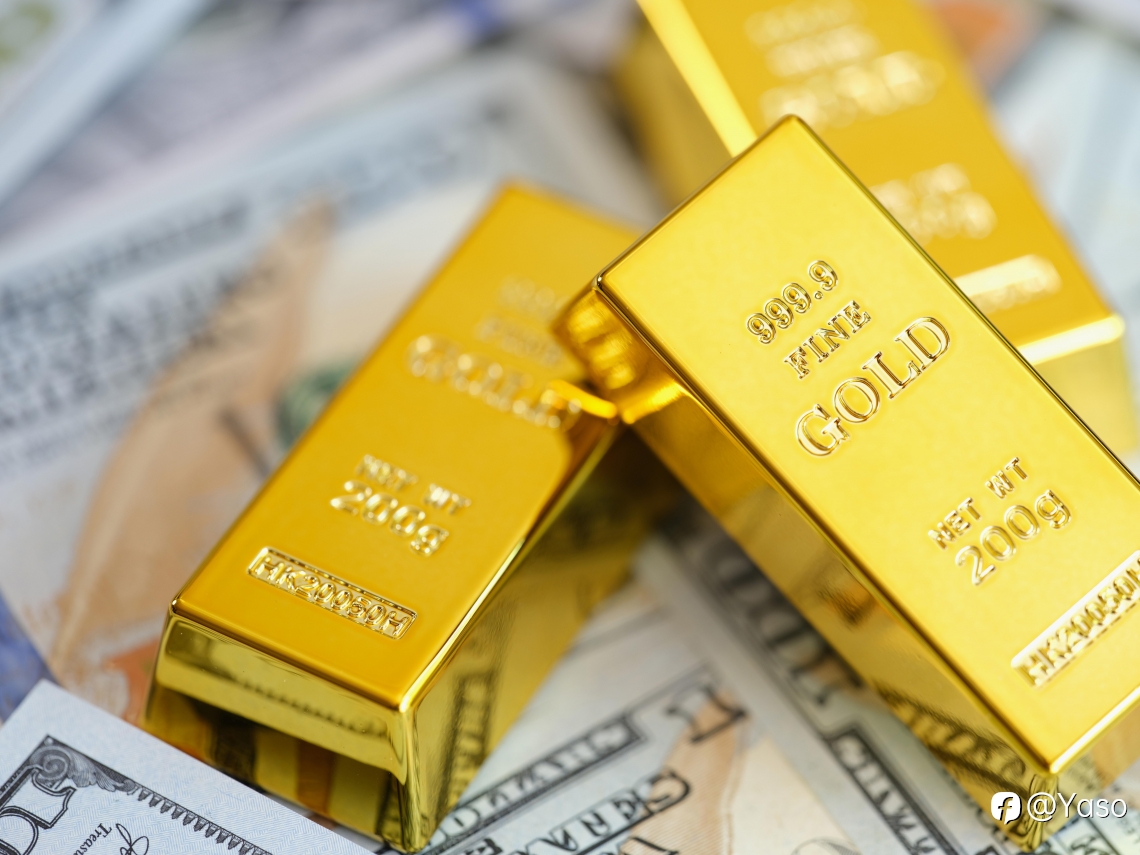The basis for the mid- to long-term rise in international gold prices still exists
TradeMax Global Markets

The Federal Reserve's September interest rate resolution has been announced, suspending interest rate increases, in line with market expectations. The newly released dot plot shows that the median federal funds rate in 2023 is 5.6%, which is higher than the current federal base rate range of 25.25% to 5.5%. In addition, the Federal Reserve raised the median interest rates in 2024 and 2025 to 5.1% and 5.1% respectively. 3.9%, a 50 basis point revision from the June dot plot.
Although the Fed raised the dot plot, the market did not buy it. According to the market's expectations for the possibility of interest rate changes in the Federal Reserve's monetary policy, the probability of the Federal Reserve raising interest rates in November and December is less than 40%. Market expectations are not consistent with the Federal Reserve's views. The Federal Reserve believes that the resilience of the U.S. economy lies in raising interest rates. foundation, but this foundation is not very solid.
The structural characteristics of the U.S. economy may mask some problems. First, as the excess savings of U.S. residents are gradually consumed, the impact of high inflation on consumption will gradually appear; second, the number of job vacancies in the labor market is declining, the unemployment rate is beginning to rise, and the labor market is Resilience is declining; third, high interest rates have restricted real estate sales, and historically high mortgage loan interest rates have caused a sharp decline in existing home sales in the United States; fourth, the proportion of fixed loans in the United States is relatively high, and the impact of interest rate increases on the economy may be delayed. The fiscal revenue of the U.S. government deviates from the growth of the U.S. economy, the growth rate of narrow money (M1) continues to decline, and the quality of the recent U.S. economic improvement is not very high.
A strong U.S. dollar is generally a common phenomenon during the Fed's interest rate hike cycle. The high interest rate differential environment created by interest rate hikes can attract international capital inflows into the United States and alleviate the downward pressure on asset prices caused by interest rate hikes. This phenomenon is happening now, but far less intensely than before. In the wave of "de-dollarization", the scale of overseas US dollar debt is shrinking, and the US dollar system is loose, making it difficult to reverse due to the Fed's interest rate hikes. This may be an important reason for the recent weakening of the negative relationship between the US dollar index and international gold prices. This also shows that the spillover effect of the Fed's monetary policy cycle is decreasing. The Fed's interest rate hikes will put greater pressure on U.S. assets. The U.S. banking crisis has not yet been completely eradicated. If the Fed raises interest rates again, it will have to consider the pressure that assets can withstand. .
In order to stimulate the economy, the U.S. government has led to a massive increase in government debt. The debt has exceeded 33 trillion US dollars, setting a historical record. The recent increase of 1 trillion US dollars only took 3 months, and the annual interest payment alone is nearly 1 trillion. dollars, higher than annual gross domestic product (GDP) growth. If the Federal Reserve continues to raise interest rates, it will greatly increase the debt repayment pressure on the U.S. government. Some financial institutions believe that this is unsustainable, and Fitch has already downgraded the U.S. credit rating. At present, the U.S. government is facing another shutdown crisis. In this regard, many central banks have increased their gold reserve holdings to express concerns about the U.S. economy. The Federal Reserve will have to consider the impact of monetary policy on the global financial and economic order.
From the above analysis, it can be seen that in the short term, the increase in the Fed's dot plot has caused concerns to the market, and the ten-year U.S. bond yield has also risen to the highest since 2007, putting pressure on gold prices. However, subsequent U.S. economic conditions may It will develop in a direction that is not conducive to the Fed's interest rate hikes, and the Fed's monetary policy may not necessarily be implemented completely in accordance with the dot plot. The basis for the mid- to long-term rise in international gold prices still exists.TMGM
Disclaimer: The content above represents only the views of the author or guest. It does not represent any views or positions of FOLLOWME and does not mean that FOLLOWME agrees with its statement or description, nor does it constitute any investment advice. For all actions taken by visitors based on information provided by the FOLLOWME community, the community does not assume any form of liability unless otherwise expressly promised in writing.
FOLLOWME Trading Community Website: https://www.followme.com


Hot
No comment on record. Start new comment.